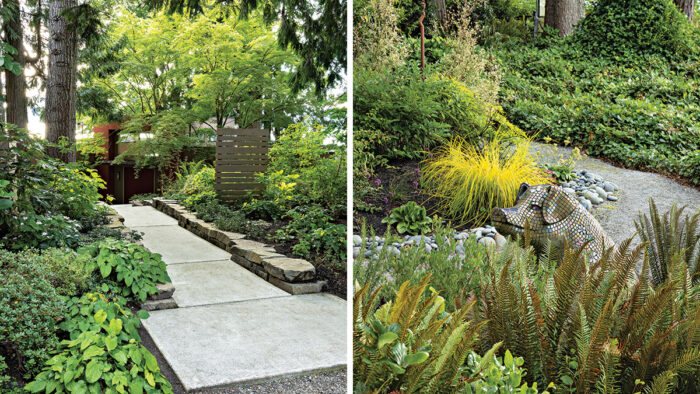
There aren’t many properties left that still have massive, native evergreen trees. Sometimes, however, you find a home built among the giants. These homes capture the essence of the forest in a calm, unobtrusive way. And that is what I found when I first arrived at this property in Bainbridge Island, Washington. It’s a modern house perched on a coastal bluff and surrounded by Douglas firs and western red cedars (Thuja plicata, Zones 5–7) that are over one hundred years old. This location is gorgeous, but it is not without its challenges. With all those massive trees come the problems of dry shade, with extreme root competition and compaction. Add a family of deer that calls this place home, and designing a beautiful yet functional landscape becomes a great deal more challenging.
Hardscaping provides transitional structure and creates moisture pockets
The first issue I addressed when designing this space was the lack of moisture, which all plants need to survive. I focused on creating planting pockets in the areas that transition to walkways by making stone ledges and walls that I then filled with soil. The loose soil, which is replete with organic matter, nurtures spilling ground covers that might normally need more water than the natural site can provide.
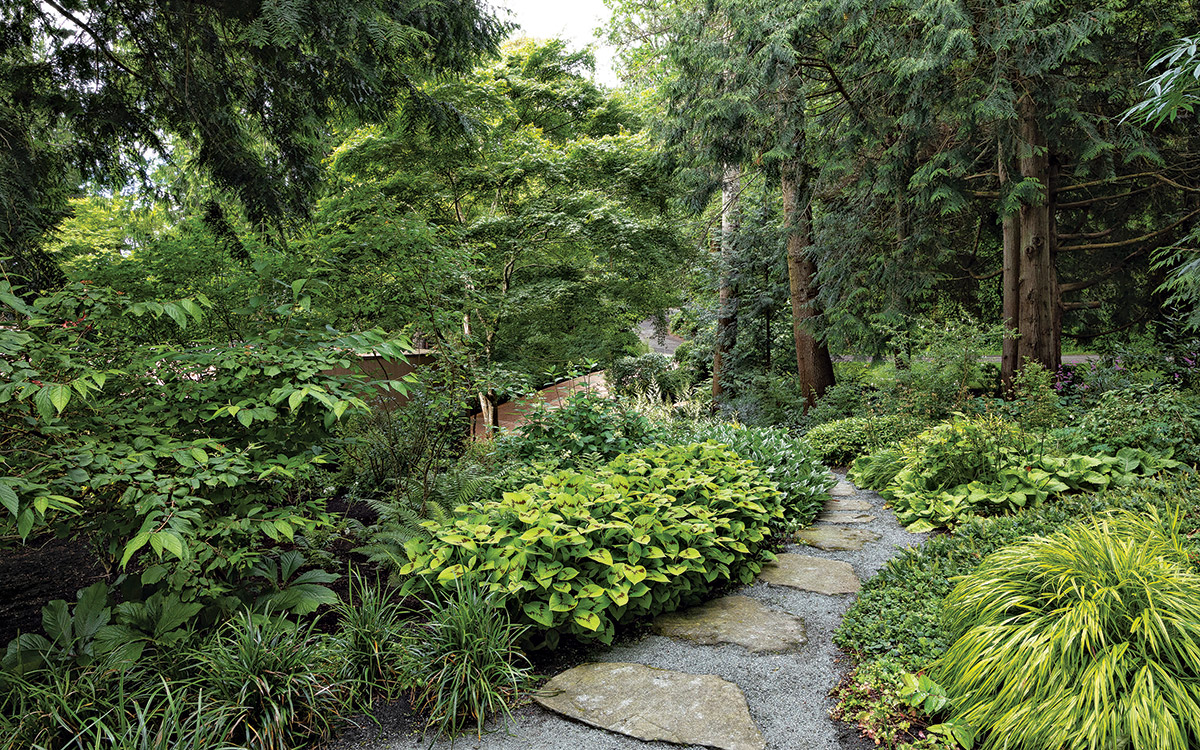
‘White Nancy’ spotted deadnettle (Lamium maculatum ‘White Nancy’, Zones 3–8), alpine water fern (Austroblechnum penna-marina, Zones 7–9), and golden clubmoss (Selaginella kraussiana ‘Aurea’, Zones 6–9) are just a few of my favorite plants for these newly created pockets. And as a bonus, they are deer resistant. These areas retain the most water, since they are the farthest away from the tree bases. Throughout this garden, much of the stonework isn’t there simply for looks; it creates zones for more hospitable growing.
Break the garden into condition-specific areas to get plant placement just right
The next step I took was to assess the remaining area designated for the garden and make note of each spot’s specific conditions. This broke up the landscape into a series of smaller chunks and helped me place the rest of the plants.
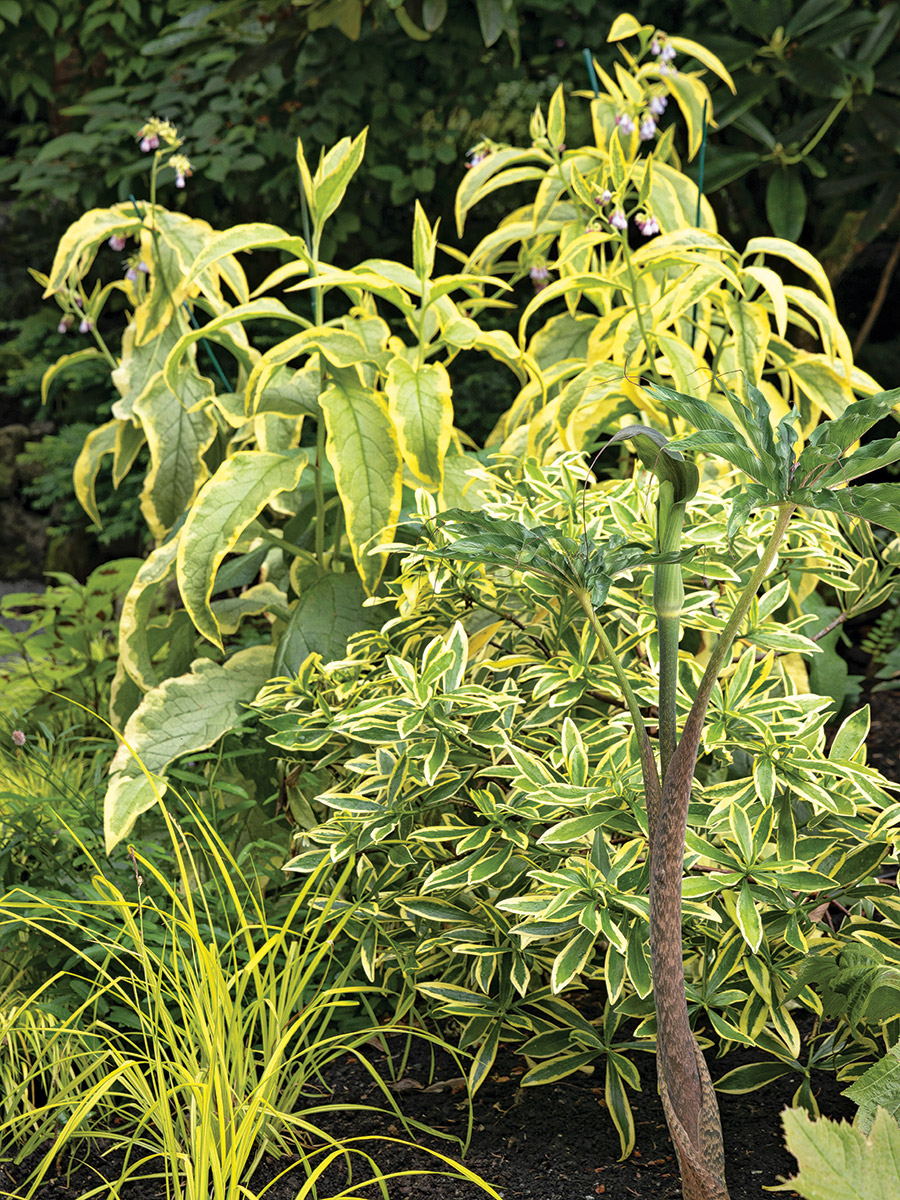
One such spot was behind the pockets of edging plants. This was a microclimate that called for plants that could take less water and more root competition. These tough plants were planted in sweeps for bigger scale and impact against the larger trees and shrubs around them. If any plants in these groupings don’t make it, ones nearby will seed into blank spots left behind. A mix of ‘Jack Frost’ brunnera (Brunnera macrophylla ‘Jack Frost’, Zones 3–8), evergreen ‘Windcliff Fragrant’ pachysandra (Pachysandra axillaris ‘Windcliff Fragrant’, Zones 6–9), and ‘Aureola’ Japanese forest grass combine for a hardworking grouping I used repeatedly. These plants grow with abandon up to the limits of soil and root compaction, creating broad stretches of texture and color with seasonal interest. Deer do not favor these plants, so browsing and munching are minimal. I make texture over flowers my mantra. Plant choice is hugely important, and in shade where color is hard to come by, the texture should be more important than the blooming ability of a plant.
The entrance of the garden is another example of a small area with a different set of conditions. ‘September Song’ rhododendron (Rhododendron ‘September Song’, Zones 6–8) and ‘Yellow Petticoats’ rhododendron (R. ‘Yellow Petticoats’, Zones 6–9), which both thrive in partial to full shade, join ‘Cannon’s Double’ azalea (R. ‘Cannon’s Double’, Zones 5–9) to brighten up the garden in spring. Larger shrubs like these also provide a windbreak for other planting areas beyond. These sheltered, shady spots provide the perfect growing conditions for the unusual and more tender plants like Jack-in-the-pulpit (Arisaema triphyllum cv., Zones 4–9) and ‘Maejima’ variegated winter daphne (Daphne odora ‘Maejima’, Zones 7–9).
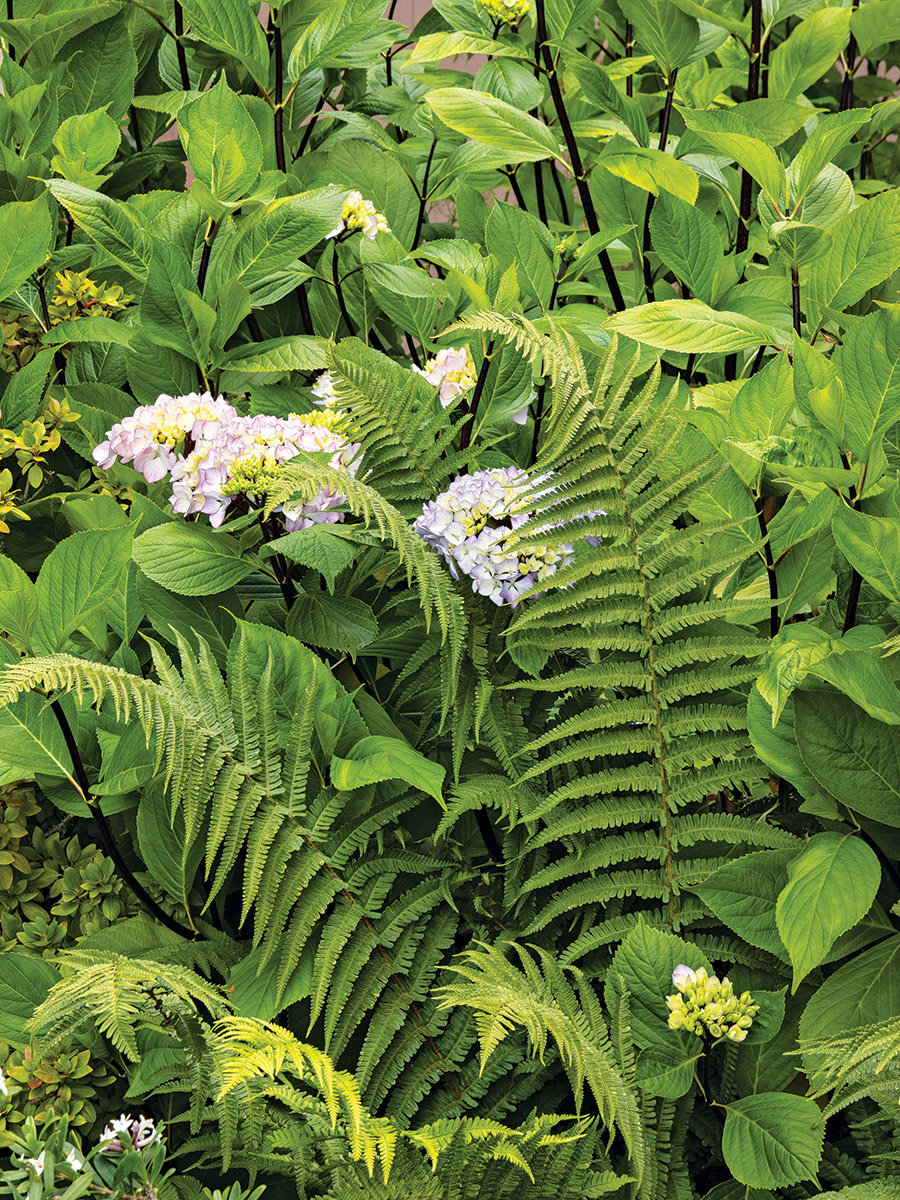
Try two things to keep vulnerable treasures safe
There are always going to be plants that you want to include in a challenging landscape but that don’t necessarily thrive in the conditions you’re dealing with. In this garden, there were several show-stoppers that I thought would add exceptional texture or color, but deer love to eat them. In fact, deer favorites made up about 20% of the plants used in this design. I used two methods to protect those plants: mass planting and blocking. Hydrangeas (Hydrangea spp. and cvs., Zones 3–9) are beloved by gardeners and deer alike. Instead of planting just one hydrangea, we planted several of the same variety. Mass planting allows for some browsing by the deer residents, leaving plenty of plants untouched for a good flower show.
Other deer favorites, such as fuchsias (Fuchsia spp. and cvs., Zones 6–11), are planted in several different locations within the garden, again in multiples. Large ferns such as alpine wood fern (Dryopteris wallichiana, Zones 6–9) or warty barberry (Berberis verruculosa, Zones 6–9) circle the fuchsias, helping to block deer. These plants cover the lower branches that may be nibbled by deer. The taller stems are allowed to dangle above the barrier plants, hopefully out of reach of the deer. Any gardeners who have deer in their area know, however, that they may eat one type of plant one year and not the next, may taste a new plant and then choose to leave it alone later, or may eat a plant labeled “deer resistant.” Mass planting and blocking are two deer-deterring methods that have worked here so far, but being able to adjust and adapt plantings occasionally is sometimes necessary.
This garden is anything but dull, and within it is an array of specialty plants. But given the challenging conditions, there are still truly tough spots where it would be hard to get any plant to survive. These are the perfect places for a piece of garden art—like a boulder or this garden’s unique mosaic pig. This beautiful, serene garden is a reminder that a stunning landscape is possible to achieve while respecting the established trees and other occupants of the land.
View more on dry design and deer:
Dealing with Dry, Compacted Soil
Susan Calhoun is the owner of Plantswoman Design in Bainbridge Island, Washington.
Photos: DoreenWynja.com
Fine Gardening Recommended Products

ARS Telescoping Long Reach Pruner
Fine Gardening receives a commission for items purchased through links on this site, including Amazon Associates and other affiliate advertising programs.

A.M. Leonard Deluxe Soil Knife & Leather Sheath Combo
Fine Gardening receives a commission for items purchased through links on this site, including Amazon Associates and other affiliate advertising programs.
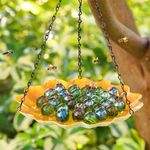
Bee Watering Station with Vivid Flower Design
Fine Gardening receives a commission for items purchased through links on this site, including Amazon Associates and other affiliate advertising programs.


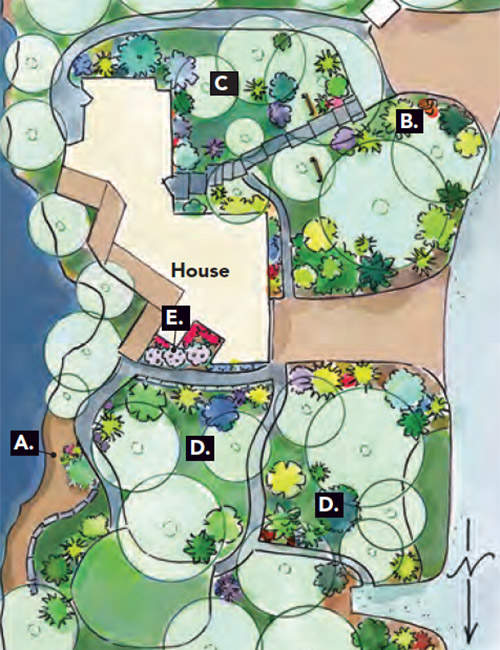
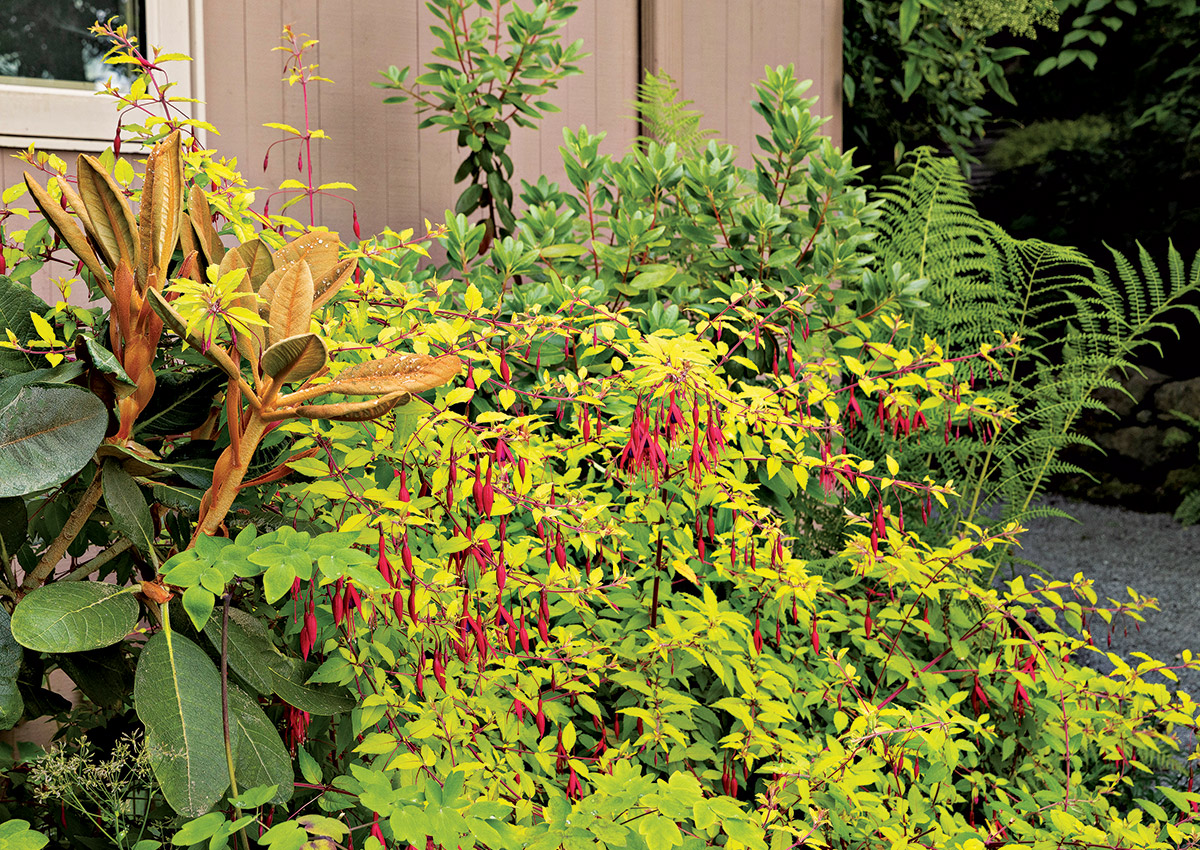
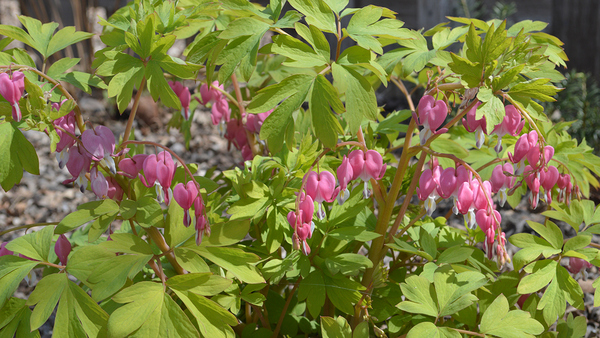

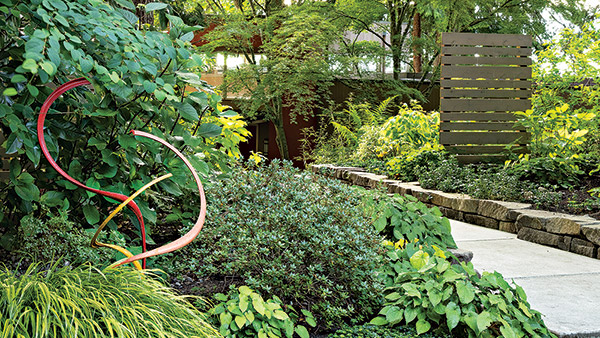
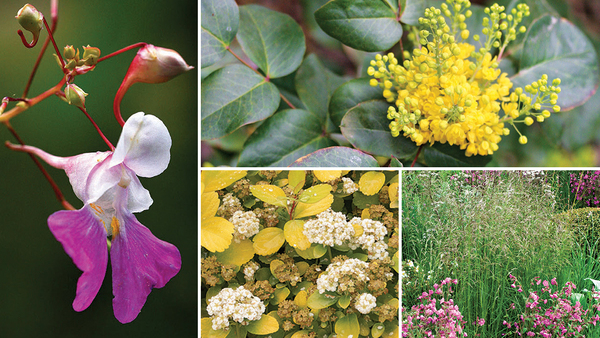

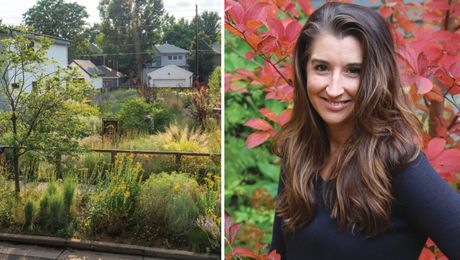
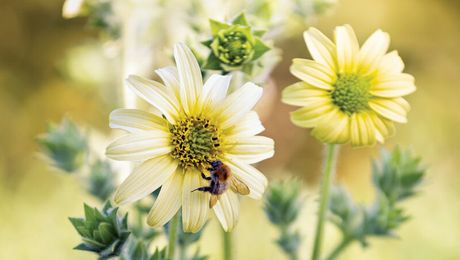










Comments
What is the plant with larger golden leaves in the photo in the hardscaping section?
Log in or create an account to post a comment.
Sign up Log in